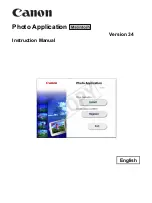
PART 1: CX-Programmer
OMRON
CHAPTER 4 – Reference
CX-Programmer _Page 63
If the new member is an array, input the number of elements in the array.
4. Click the
OK
Button. The member will be inserted.
•
Registering Data Structure Symbols
To insert a symbol into the symbol table, select a registered structure data type in data type view.
Note:
Data structure information will not be updated if you edit data structures in the symbol table and then
download only the symbol table to the PLC. When you download a symbol table that contains data
structures, always download the symbol table and the program together.
Rules for Address Allocation to Structure Symbols
When the first address is set for a structure symbol, addresses are automatically allocated in the
order that the members are registered.
If there are members with a BOOL data type, addresses are allocated as described below. Some
addresses may not be used.
•
BOOL Members Mixed with Non-BOOL Members
Addresses in different words are allocated to the members.
Example:
D0.0 is allocated to Member1 (BOOL) and D1 is allocated to the next member, Member2
(INT).
•
Consecutive BOOL Members
Bits in the same word are allocated to consecutive BOOL members.
Example:
D0.0 is allocated to Member1 (BOOL) and D0.1 is allocated to the next member, Member2
(BOOL).
If more than 16 consecutive bits are required, bits in the next word are allocated.
•
Non-consecutive BOOL Members
Addresses in different words are allocated to the BOOL members.
Example:
D0.0 is allocated to Member1 (BOOL), D1 is allocated to Member2 (INT), and D2.0 is
allocated to Member3 (BOOL).
•
BOOL Members That Are Arrays Next to BOOL Members That Are Not Arrays
Addresses in different words are allocated to the members that are arrays and to the
members that are not.
Example:
D0.0 is allocated to Member1 (BOOL) and bits starting with D1.0 are allocated to the next
member, Member2 (BOOL array).
•
Consecutive BOOL Array Members
Addresses in different words are allocated to the BOOL members.
Example:
Bits starting with D0.0 are allocated to Member1 (BOOL array) and bits starting with D1.0
are allocated to the next member, Member2 (BOOL array).
Specifications of Structure Symbols
Creating Data Types for Data Structures
•
Member Data Types
The following data types can be used for members.
BOOL, WORD, DWORD, LWORD, INT, DINT, LINT, UNIT, UDINT, ULINT, REAL, LREAL,
and user-defined structure data types
•
Memory Areas That Can Be Allocated to Structure Symbols
Addresses in the following memory areas can be allocated to structure symbols.
Summary of Contents for CX-PROGRAMMER V9
Page 1: ...Cat No W446 E1 12 CX Programmer Ver 9 CXONE AL_C V4 AL_D V4 SYSMAC OPERATION MANUAL...
Page 2: ......
Page 3: ...SYSMAC CX Programmer Ver 9 CXONE AL C V4 AL D V4 Operation Manual Revised July 2010...
Page 4: ......
Page 6: ......
Page 32: ......
Page 33: ...PART 1 CX Programmer...
Page 34: ......
Page 91: ......
Page 111: ......
Page 191: ...PART 1 CX Programmer CHAPTER 4 Reference OMRON CX Programmer _Page 108...
Page 217: ......
Page 233: ......
Page 234: ...PART 2 CX Server PLC Tools...
Page 235: ......
Page 243: ......
Page 249: ......
Page 261: ...PART 2 CX Server PLC Tools CHAPTER 2 PLC Memory Component OMRON CX Server PLC Tools_Page 18...
Page 280: ......
Page 333: ......
Page 377: ......
Page 409: ......
Page 430: ......
Page 431: ...PART 3 CX Server Runtime...
Page 432: ......
Page 476: ......
Page 482: ......
Page 498: ......
Page 524: ......
Page 534: ......
Page 535: ......
Page 536: ......
















































